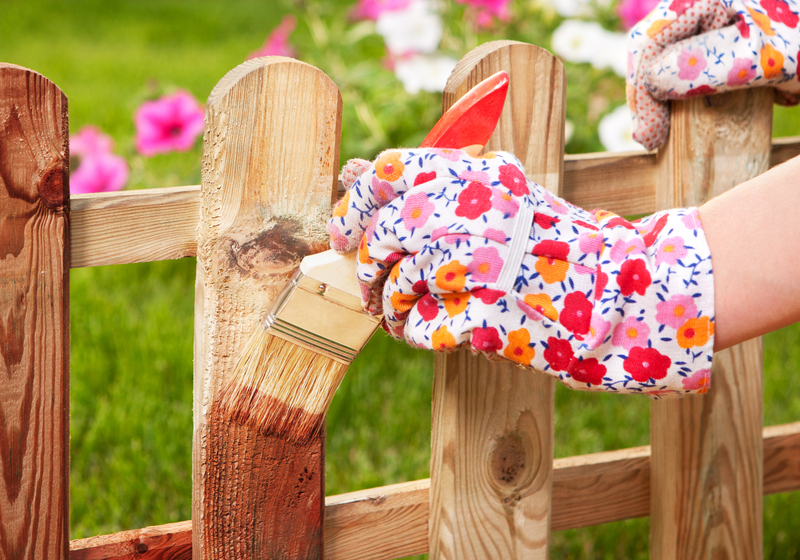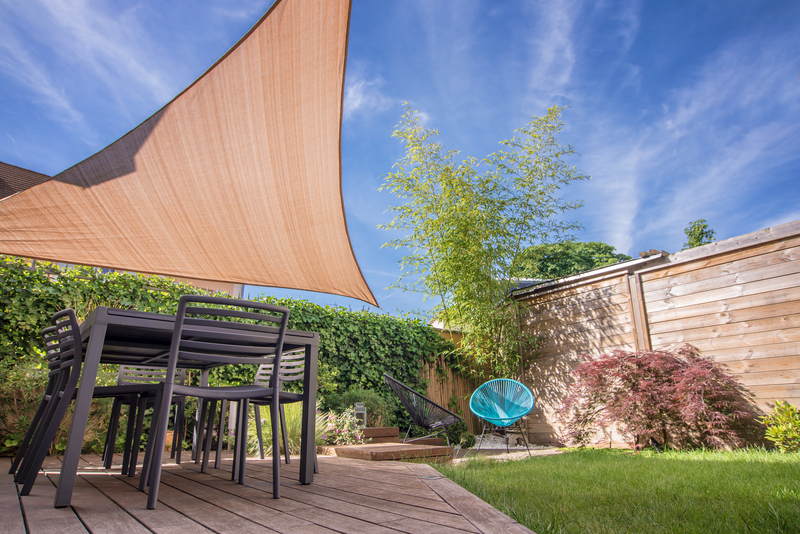Ensuring a Safe and Inviting Garden for Dogs
Posted on 25/06/2025
Ensuring a Safe and Inviting Garden for Dogs
Our gardens are sanctuaries: spaces for relaxation, play, and natural beauty. But if you share your home with a dog, your outdoor space takes on even greater significance. A dog-friendly garden not only offers a safe zone for exercise and exploration but also supports your furry friend's well-being. In this comprehensive guide, we'll explore how to design a safe and inviting garden for dogs, balancing aesthetics, security, and canine happiness.
Why Create a Dog-Friendly Garden?
Dogs aren't just pets--they're family. Like any family member, they deserve a garden environment that is both safe and stimulating. Here's why tailoring your outdoor space for your dog is so important:
- Physical Health: A secure yard allows dogs to run, sniff, and play, supporting healthy activity levels.
- Mental Stimulation: Gardens offer varied scents, sights, and textures for enriched exploration.
- Safety: Well-designed gardens protect pets from hazards such as toxic plants, sharp tools, and busy roads.
- Bonding: An inviting garden promotes shared moments and play between you and your dog.

Assessing Your Garden: Safety First
Before making any changes, evaluate your current garden from your dog's perspective. Walk around at your dog's level, noting potential dangers and escape points.
Common Garden Hazards for Dogs
- Toxic Plants: Many popular garden plants are poisonous to dogs. Lilies, foxgloves, azaleas, daffodils, and some bulbs can be highly toxic.
- Hazardous Chemicals: Pesticides, herbicides, and fertilizers may cause illness if ingested or if your dog walks on freshly treated surfaces.
- Sharp Objects: Broken glass, sharp tools, and protruding wires or edges can injure curious pups.
- Escape Routes: Gaps beneath fences, loose boards, or low gates offer tempting escape routes for adventurous dogs.
- Garden Ponds & Pools: Unfenced water can be dangerous for dogs who cannot swim or may fall in.
Steps to Improve Garden Safety
- Remove or Replace Toxic Plants: Replace dangerous species with dog-safe alternatives such as sunflowers, marigolds, or roses.
- Secure Boundaries: Inspect fencing for gaps or weak spots. Ensure fences are high enough--at least 1.8 meters for large or athletic breeds.
- Store Chemicals Safely: Lock away fertilizers and pesticides in an out-of-reach shed or cupboard.
- Cover Water Features: Use mesh covers or fencing for ponds and pools, and provide a safe water source for drinking.
- Clear up Tools and Debris: After garden chores, tidy away tools and sharp objects to prevent injuries.
Designing an Inviting Dog-Friendly Garden
A safe garden for dogs is just the foundation. To make your yard welcoming, think about how your dog interacts with the space. Does your dog love to dig, bask in the sun, or tear around at high speeds? Let's look at ways to cater to canine instincts while keeping your garden beautiful.
Choosing Dog-Safe Plants
- Dog-Friendly Ground Cover: Clover, Irish moss, or creeping thyme tolerate trampling and are non-toxic to dogs.
- Non-Toxic Flowers: Sunflowers, snapdragons, zinnias, and camellias add color and are dog-friendly.
- Herbs: Basil, parsley, and rosemary are safe; they add fragrance and may even benefit your dog's health.
Lawn and Pathways
Lawns are often a dog's favorite play zone but may suffer from wear, urine burns, and muddy patches. Consider:
- Durable Grass Species: Ryegrass and fescue mixes stand up to wear better than fine grasses.
- Artificial Turf: Modern options look natural and withstand heavy traffic. Choose lead-free, pet-safe varieties.
- Sturdy Paths: Gravel (pea gravel), stone, or wood chips make resilient paths where dogs like to race along fence lines.
- Paw-Friendly Surfaces: Avoid surfaces that get too hot or rough (like some slate or concrete).
Shade and Shelter
Dogs need protection from the elements. Provide shady areas where your dog can cool off and shelter from rain or wind:
- Plant Trees or Tall Shrubs: Willow, dogwood, or non-toxic maples offer natural shade.
- Install a Canopy or Pergola: Structures draped with shade cloth or vines create a dual-purpose shelter.
- Dog Houses or Tunnels: Attractive, weatherproof shelters give dogs their own spot to retreat.
Designated Play and Dig Zones
Channel digging and play into acceptable areas:
- Sand or Dig Boxes: Bury toys or treats to encourage digging only in these areas.
- Agility Features: Hoops, tunnels, or ramps create a fun obstacle course.
- Open Space: Leave grassy areas clear for running and games of fetch.
Water Access
Always provide fresh water outdoors. In warm weather, many dogs enjoy a splash pool or sprinkler--supervise to ensure safety, and empty when not in use.
Maintaining a Dog-Safe Garden Year-Round
- Mow and Check: Regularly mow grass to deter ticks and spot hidden hazards.
- Inspect Fences and Gates: Weather or digging can create escape routes. Check for holes after storms or snowy spells.
- Manage Waste: Promptly clear dog waste to prevent disease and protect lawns.
- Watch for New Growth: Some self-seeding plants can be invasive or less dog-friendly--thin or remove as needed.
Pest and Parasite Control in Pet-Friendly Gardens
Safe Pest Control Options
- Natural Predators: Encourage ladybugs and birds to reduce damaging insect populations.
- Physical Barriers: Use netting to protect vulnerable plants rather than chemical sprays.
- Organic Solutions: Neem oil and vinegar sprays are generally less toxic but still use sparingly.
- Cautious Use: Even pet-safe products require careful use--limit access until any treatment dries or settles.
Parasite Prevention
- Fleas and Ticks: Keep grass cut, clear brush, and consult your vet about ongoing protection.
- Slugs and Snails: Iron-phosphate baits (pet-safe version) are better than traditional slug pellets.
Pet-Proofing Your Garden Features
Your garden may include raised beds, patios, or decorative rocks. Plan these with your dog's safety in mind:
- Secure Raised Beds: Sturdy edges and taller beds discourage dogs from trampling delicate plants.
- Fencing Around Delicate Areas: Use decorative, low fencing to protect flower beds while allowing dogs freedom.
- Avoid Cocoa Mulch: Contains theobromine, toxic to dogs; opt for pine, cedar, or rubber mulch instead.
- Smooth Edges: Make sure stonework or decking doesn't have sharp or jagged edges where paws may be cut.
Engaging Your Dog in the Garden Environment
A truly inviting garden stimulates all of your dog's senses. Try these ideas:
- Scent Trails: Hide treats or use dog-safe herbs to create new scents to explore.
- Visual Stimulation: Plants of varying heights, garden mirrors, or kinetic sculptures add interest.
- Interactive Toys: Hang tug ropes, install treat-dispensing toys, or integrate play features in the landscape.
Training and Boundaries: Working with Your Dog
Training goes hand-in-hand with garden safety. Teach your dog which areas are off-limits and reward garden-friendly behavior.
Tips for Positive Garden Habits
- Supervised Exploration: Spend time with your dog outdoors; redirect as necessary.
- Barrier Training: Use garden borders or edging to visually and physically define spaces.
- Provide Distractions: Regularly rotate garden toys and chews to keep interest high and mischief low.
Addressing Common Challenges
Dealing With Digging
Digging is a canine instinct. If your dog is turning your garden into a dig site:
- Create a special digging area, and praise your dog for using it.
- Reinforce flower beds and cover with mesh or stones.
- Increase exercise and mental activity to reduce boredom-driven digging.
Stopping Fence Jumping and Barking
- Increase fence height and block visual access to trigger points.
- Plant dense shrubs along fencelines.
- Reward calm behavior and distract from external triggers.
Dog-Friendly Garden Features to Inspire You
Here are some creative features that enhance a welcoming and safe garden for dogs:
- Dog Viewing Windows: Secure plexiglass panels at fence height let dogs safely watch the world go by.
- Canine Splash Zone: A shallow, rock-edged stream or splash pad (with supervised use).
- Ramps and Steps: Gentle slopes help aging dogs navigate raised areas.
- Seating for Humans: Benches or patios where you can enjoy the garden with your pet.
The Year-Round Dog Garden Calendar
Keep your garden inviting across the seasons:
- Spring: Check boundaries for winter damage; plant fresh grass; start pest prevention early.
- Summer: Refresh water stations; add extra shade; discourage digging in hot weather with cool play features.
- Autumn: Rake leaves promptly (some are toxic); reinforce fences before storms.
- Winter: Ensure shelters are watertight; avoid salt or antifreeze (toxic); clear snow from play areas.

FAQs: Ensuring a Safe Yard for Dogs
What plants are non-toxic to dogs?
Consider sunflowers, marigolds, snapdragons, zinnias, and most herbs (basil, sage, thyme). Avoid lilies, tulips, daffodils, foxgloves, and oleander.
How can I discourage my dog from eating grass?
Eating grass is normal but too much may signal boredom or stomach upset. Offer more chewing toys, provide distractions, and ensure your dog is on parasite prevention.
Is mulch safe for dogs?
Never use cocoa mulch. Pine, cedar, or synthetic mulch are safer but monitor for chewing.
How do I prevent muddy patches?
Install hard-wearing paths, train your dog to use specific toilet spots, and reseed grass as needed. Consider artificial turf for high-traffic zones.
Conclusion: A Garden for Every Dog
With a bit of planning and creativity, you can have a garden that is both safe and inviting for your dog--and for you. Ensuring a dog-safe yard goes beyond eliminating hazards: it means creating a stimulating, beautiful, and nurturing outdoor haven that reflects the unique bond between you and your pup. Happy gardening, and here's to many joyful tail wags in your home's green space!



